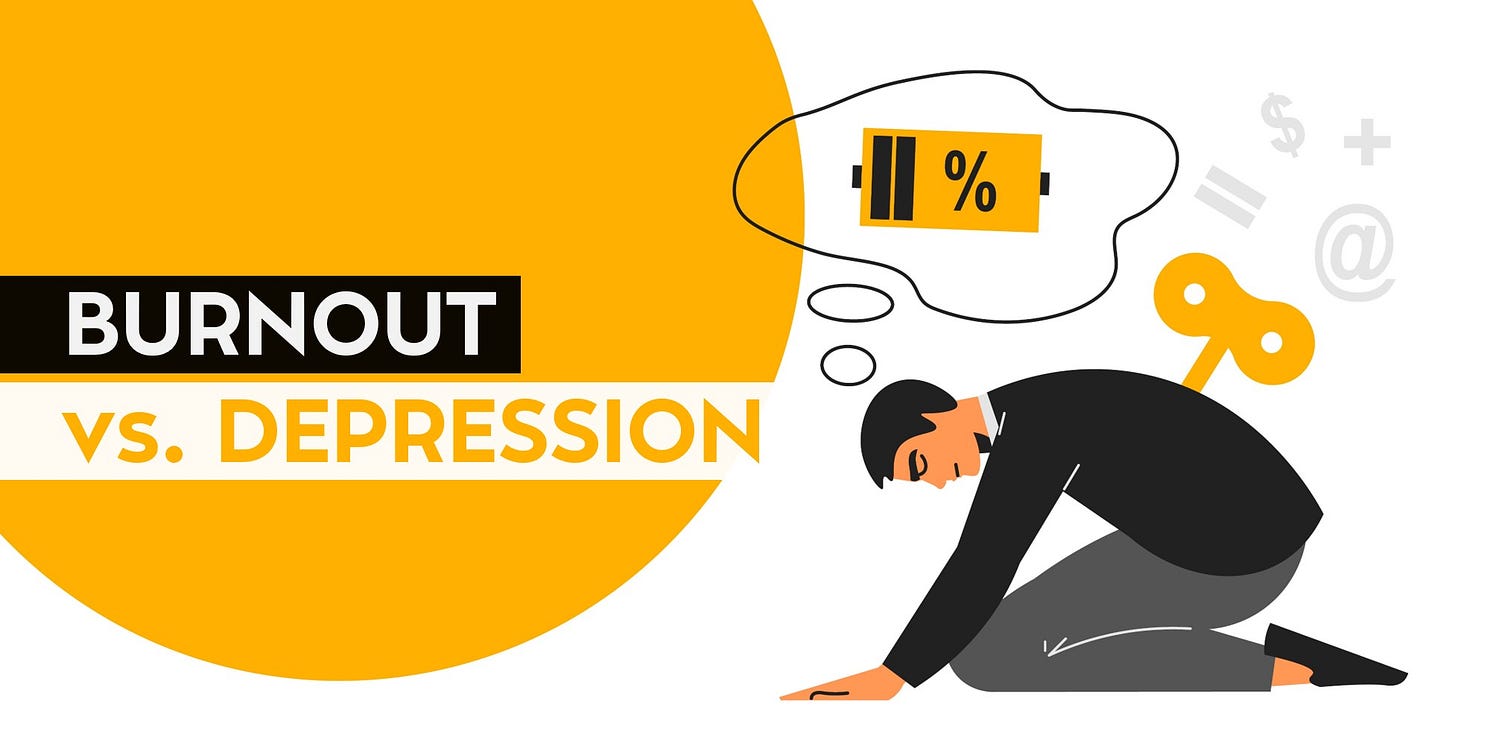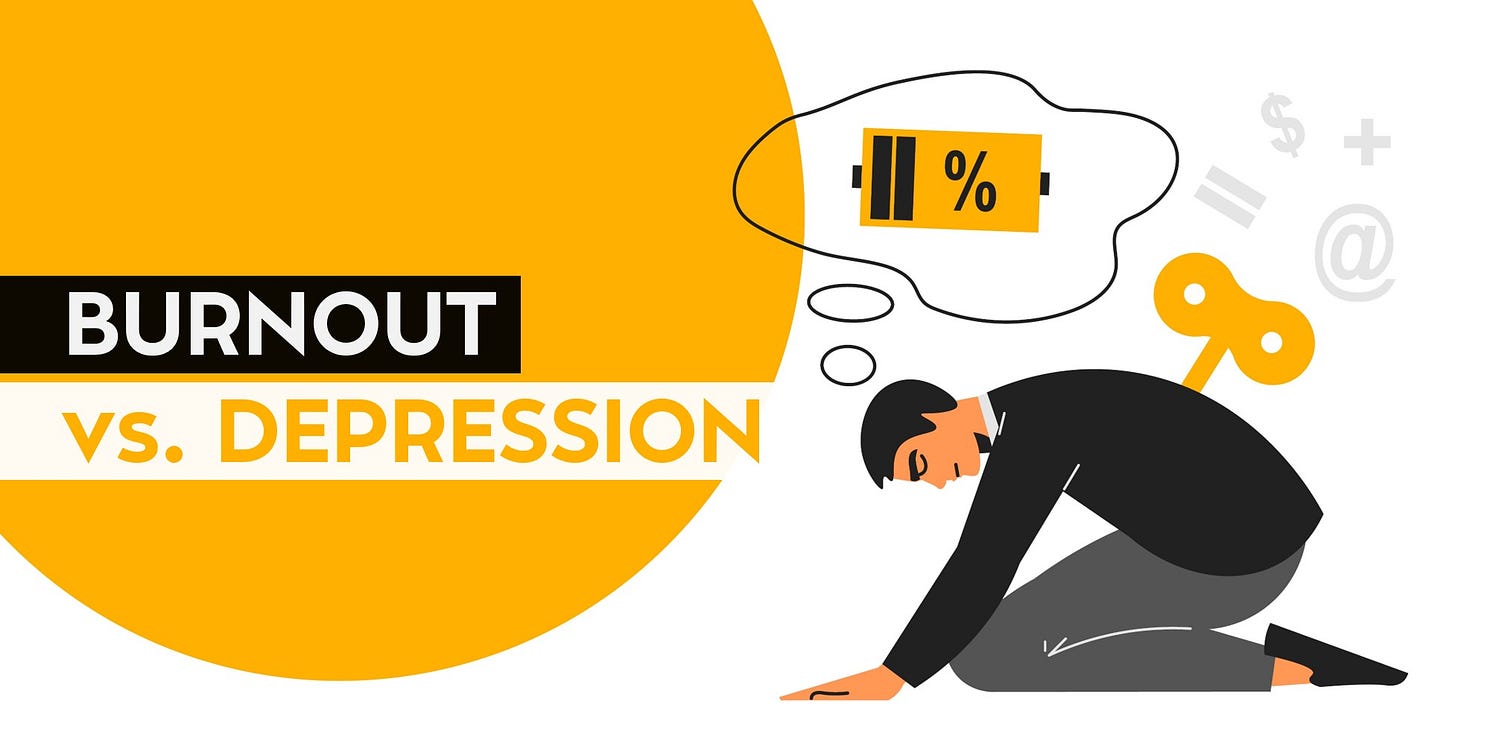NEJM
Srijan Sen, M.D., Ph.D.
October 29, 2022
Chief Researcher and Editor of the Site:
Joaquim Cardoso MSc.
the health transformation
research institute and knowledge portal
October 29, 2022
Executive Summary:
Awareness of physician burnout in the United States has increased dramatically
- The growing attention [about physician burnout] has helped to reduce the stigma associated with burnout, highlighting the health care system, rather than the individual, as the primary driver of the problem.
- However, this progress in stigma reduction has largely been limited to burnout — to the exclusion of mental health conditions such as anxiety, suicidality, and, most notably, depression.
The distinction, or lack thereof, between burnout and depression in physicians has been the subject of much controversy and confusion.
- Part of the confusion stems from the varying definitions of burnout employed by various studies (e.g. Maslach Burnout Inventory)
- Among physicians students, depression rates quintuple immediately after residency begins.
- This dramatic increase indicates that the conditions of practicing medicine, rather than individual factors, are driving depression among physicians.
- Furthermore, the specific work-related factors (e.g., workload and workplace environment) and non–work-related factors (e.g., personality traits and mental health history) that predict the development of depression are almost identical to those that predict the development of burnout.4
Although researchers should continue to assess whether burnout is meaningfully distinguishable from depression, the argument that depression and burnout are caused by fundamentally different precipitants is unsupported by the evidence to date.
A corollary often drawn from the premise that physician distress is caused by systemic factors is that individual-level interventions have a minimal role in improving physician well-being.
- …though fixing the work environment is key to improving clinician well-being over the long term, increasing access to and utilization of effective individual interventions for currently affected people is also critical.
- Whereas existing and proposed interventions for burnout are implemented primarily at the level of the health care system, many effective interventions for depression are implemented at the individual level.
Crucially, identification and treatment of depression can help reduce the risk of suicide among physicians.
Research and advocacy related to clinician burnout have been successful in raising awareness of the problem.
- However, the well-intentioned insistence that burnout is not the fault of the individual and that systemic change is needed has led to exaggeration of the differences between burnout and depression.
- If we are to heal what ails physicians, we should stop reinforcing existing stigma related to mental health conditions in our effort to combat the stigma attached to burnout.
Expanding reform efforts to encompass depression and mental health more broadly will not reduce the urgency of reforming our health care system. With these steps, we can help make medicine healthier for both clinicians and the patients they care for.

Awareness of physician burnout in the United States has increased dramatically.
So far in 2022, there have been 10 times as many published scholarly articles on burnout as there were 20 years ago, and the National Academy of Medicine and the U.S. Surgeon General’s office have recently published reports on clinician burnout.
This growing attention has helped to reduce the stigma associated with burnout, highlighting the health care system, rather than the individual, as the primary driver of the problem.
The growing attention [about physician burnout] has helped to reduce the stigma associated with burnout, highlighting the health care system, rather than the individual, as the primary driver of the problem.
However, this progress in stigma reduction has largely been limited to burnout — to the exclusion of mental health conditions such as anxiety, suicidality, and, most notably, depression.
In fact, efforts to destigmatize burnout have often emphasized a strong distinction between burnout and depression, in the hope of clarifying that burnout is not the result of individual weakness.
It is common, for instance, to read statements such as “Equating burnout to depression shifts the responsibility from the workplace to the individual” and “In many work environments, burnout is stigmatized as a sign of weakness or incompetence or even mental illness.”1,2
The implication of such messaging is that burnout is a system-level problem that should be mitigated by system-level interventions, whereas depression is an individual-level problem that should be mitigated by individual-level interventions.
However, this progress in stigma reduction has largely been limited to burnout — to the exclusion of mental health conditions such as anxiety, suicidality, and, most notably, depression.
Although this framing is attractive in its simplicity, it is inconsistent with the preponderance of research.
Furthermore, it has the unintended consequence of perpetuating misunderstandings and stigma associated with depression and deters us from fully utilizing the tools that have been developed for preventing and treating depression in our efforts to improve clinician well-being.
Although this framing is attractive in its simplicity, it is inconsistent with the preponderance of research.

The distinction, or lack thereof, between burnout and depression in physicians has been the subject of much controversy and confusion.
Part of the confusion stems from the varying definitions of burnout employed by various studies.
One review identified 142 different definitions of physician burnout in 182 studies.3
Among the tools for diagnosing and assessing burnout, the most commonly used is the Maslach Burnout Inventory, which assesses continuous scores for three domains:
- emotional exhaustion,
- depersonalization, and
- reduced sense of personal accomplishment.
Among the tools for diagnosing and assessing burnout, the most commonly used is the Maslach Burnout Inventory, which assesses continuous scores for three domains: (1) emotional exhaustion, (2) depersonalization, and (3) reduced sense of personal accomplishment.
The core component, emotional exhaustion, actually has a stronger correlation with depressive symptoms than it does with the other two components of burnout.
Moreover, despite the conceptualization of burnout as being unique as a work-related phenomenon, work-related stress is the primary driver of depression among physicians.
A stark illustration of this dynamic is the fact that the prevalence of depression among training physicians before they enter residency is similar to that among young adults in the general population, but depression rates quintuple immediately after residency begins.
This dramatic increase indicates that the conditions of practicing medicine, rather than individual factors, are driving depression among physicians.
… depression rates quintuple immediately after residency begins.
This dramatic increase indicates that the conditions of practicing medicine, rather than individual factors, are driving depression among physicians.
Furthermore, the specific work-related factors (e.g., workload and workplace environment) and non–work-related factors (e.g., personality traits and mental health history) that predict the development of depression are almost identical to those that predict the development of burnout.4
Overall, the relative importance of work-related factors and non–work-related factors is similar for depression and for burnout.4,5
Although researchers should continue to assess whether burnout is meaningfully distinguishable from depression, the argument that depression and burnout are caused by fundamentally different precipitants is unsupported by the evidence to date.
Although researchers should continue to assess whether burnout is meaningfully distinguishable from depression, the argument that depression and burnout are caused by fundamentally different precipitants is unsupported by the evidence to date.

A corollary often drawn from the premise that physician distress is caused by systemic factors is that individual-level interventions have a minimal role in improving physician well-being.
But there are many conditions for which individual-level interventions are indicated even if the primary cause lies at the system level.
If people develop lung cancer from workplace exposure to asbestos, removing the toxic asbestos from the environment is a clear priority, but no one would conclude that the affected people don’t need individual treatment because their disease was workplace-induced.
Analogously, though fixing the work environment is key to improving clinician well-being over the long term, increasing access to and utilization of effective individual interventions for currently affected people is also critical.
…though fixing the work environment is key to improving clinician well-being over the long term, increasing access to and utilization of effective individual interventions for currently affected people is also critical.

Whereas existing and proposed interventions for burnout are implemented primarily at the level of the health care system, many effective interventions for depression are implemented at the individual level.
These include not only psychiatric medications but also a spectrum of evidence-based preventive and therapeutic approaches that can be tailored to the nature and severity of the distress felt by a given physician.
… many effective interventions for depression are implemented at the individual level. These include not only psychiatric medications but also a spectrum of evidence-based preventive and therapeutic approaches that can be tailored to the nature and severity of the distress felt by a given physician.
Crucially, identification and treatment of depression can help reduce the risk of suicide among physicians.
Unfortunately, when we encourage clinicians to consider themselves burned out rather than depressed, they tend not to seek or receive the individual-level interventions that can improve well-being.
Crucially, identification and treatment of depression can help reduce the risk of suicide among physicians.

Research and advocacy related to clinician burnout have been successful in raising awareness of the problem.
However, the well-intentioned insistence that burnout is not the fault of the individual and that systemic change is needed has led to exaggeration of the differences between burnout and depression.
The unintended consequences have included further stigmatization of mental health conditions, reinforcement of barriers to seeking care, and a failure to fully apply established and effective depression interventions to improve physician well-being.
If we are to heal what ails physicians, we should stop reinforcing existing stigma related to mental health conditions in our effort to combat the stigma attached to burnout.
If we are to heal what ails physicians, we should stop reinforcing existing stigma related to mental health conditions in our effort to combat the stigma attached to burnout.
Expanding reform efforts to encompass depression and mental health more broadly will not reduce the urgency of reforming our health care system.
Rather, it will increase the likelihood that physicians who are struggling can access the spectrum of available evidence-based individual interventions.
In addition, our knowledge about depression and its systemic drivers can help in identifying the key factors to target for reform.
With these steps, we can help make medicine healthier for both clinicians and the patients they care for.
Expanding reform efforts to encompass depression and mental health more broadly will not reduce the urgency of reforming our health care system.
Rather, it will increase the likelihood that physicians who are struggling can access the spectrum of available evidence-based individual interventions.
About the authors & affiliations
Srijan Sen, M.D., Ph.D.
From the Eisenberg Family Depression Center,
University of Michigan, Ann Arbor.
References (5)
1.Kim YJ. Burnout is not depression. Psychology Today. June 2, 2021 (https://www.psychologytoday.com/us/blog/apple-day/202106/burnout-is-not-depression. opens in new tab).
2.Maslach C. Finding solutions to the problem of burnout. Consult Psychol J 2017;69:143–152.
3.Rotenstein LS, Torre M, Ramos MA, et al. Prevalence of burnout among physicians: a systematic review. JAMA 2018;320:1131–1150.
4.Rotenstein LS, Zhao Z, Mata DA, Guille C, Sen S. Substantial overlap between factors predicting symptoms of depression and burnout among medical interns. J Gen Intern Med 2021;36:240–242.
5.Bianchi R, Brisson R. Burnout and depression: causal attributions and construct overlap. J Health Psychol 2019;24:1574–1580.












